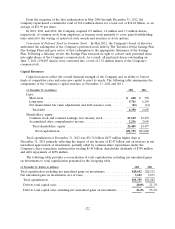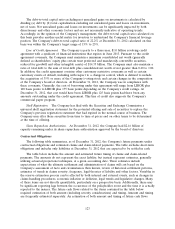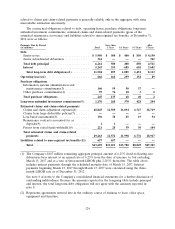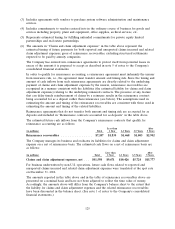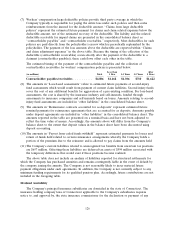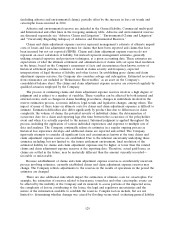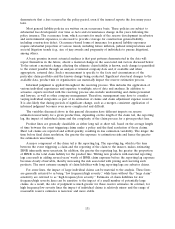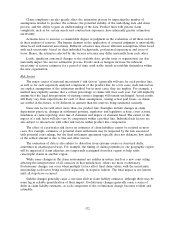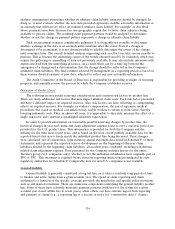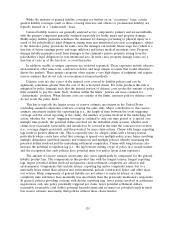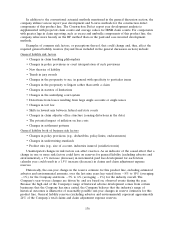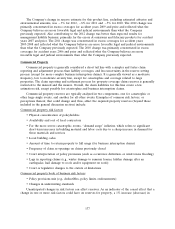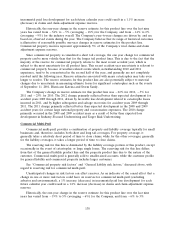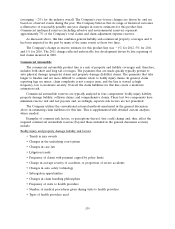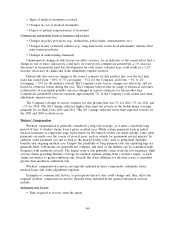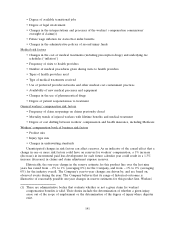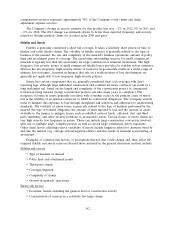Travelers 2012 Annual Report Download - page 144
Download and view the complete annual report
Please find page 144 of the 2012 Travelers annual report below. You can navigate through the pages in the report by either clicking on the pages listed below, or by using the keyword search tool below to find specific information within the annual report.
Claim complexity can also greatly affect the estimation process by impacting the number of
assumptions needed to produce the estimate, the potential stability of the underlying data and claim
process, and the ability to gain an understanding of the data. Product lines with greater claim
complexity, such as for certain surety and construction exposures, have inherently greater estimation
uncertainty.
Actuaries have to exercise a considerable degree of judgment in the evaluation of all these factors
in their analysis of reserves. The human element in the application of actuarial judgment is unavoidable
when faced with material uncertainty. Different actuaries may choose different assumptions when faced
with such uncertainty, based on their individual backgrounds, professional experiences and areas of
focus. Hence, the estimates selected by the various actuaries may differ materially from each other.
Lastly, significant structural changes to the available data, product mix or organization can also
materially impact the reserve estimation process. Events such as mergers increase the inherent
uncertainty of reserve estimates for a period of time, until stable trends re-establish themselves within
the new organization.
Risk factors
The major causes of material uncertainty (‘‘risk factors’’) generally will vary for each product line,
as well as for each separately analyzed component of the product line. In a few cases, such risk factors
are explicit assumptions of the estimation method, but in most cases, they are implicit. For example, a
method may explicitly assume that a certain percentage of claims will close each year, but will implicitly
assume that the legal interpretation of existing contract language will remain unchanged. Actual results
will likely vary from expectations for each of these assumptions, causing actual paid losses, as claims
are settled in the future, to be different in amount than the reserves being estimated currently.
Some risk factors will affect more than one product line. Examples include changes in claim
department practices, changes in settlement patterns, regulatory and legislative actions, court actions,
timeliness of claim reporting, state mix of claimants and degree of claimant fraud. The extent of the
impact of a risk factor will also vary by components within a product line. Individual risk factors are
also subject to interactions with other risk factors within product line components.
The effect of a particular risk factor on estimates of claim liabilities cannot be isolated in most
cases. For example, estimates of potential claim settlements may be impacted by the risk associated
with potential court rulings, but the final settlement agreement typically does not delineate how much
of the settled amount is due to this and other factors.
The evaluation of data is also subject to distortion from extreme events or structural shifts,
sometimes in unanticipated ways. For example, the timing of claims payments in one geographic region
will be impacted if claim adjusters are temporarily reassigned from that region to help settle
catastrophe claims in another region.
While some changes in the claim environment are sudden in nature (such as a new court ruling
affecting the interpretation of all contracts in that jurisdiction), others are more evolutionary.
Evolutionary changes can occur when multiple factors affect final claim values, with the uncertainty
surrounding each factor being resolved separately, in stepwise fashion. The final impact is not known
until all steps have occurred.
Sudden changes generally cause a one-time shift in claim liability estimates, although there may be
some lag in reliable quantification of their impact. Evolutionary changes generally cause a series of
shifts in claim liability estimates, as each component of the evolutionary change becomes evident and
estimable.
132


